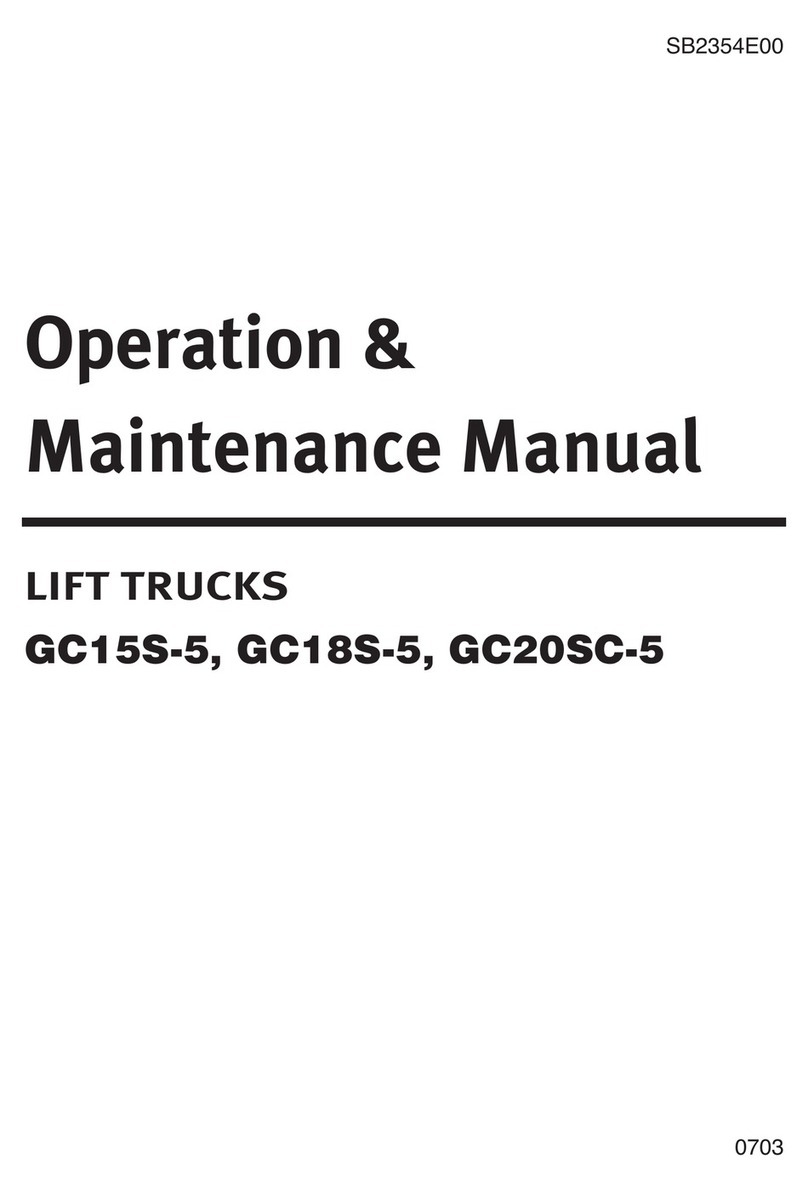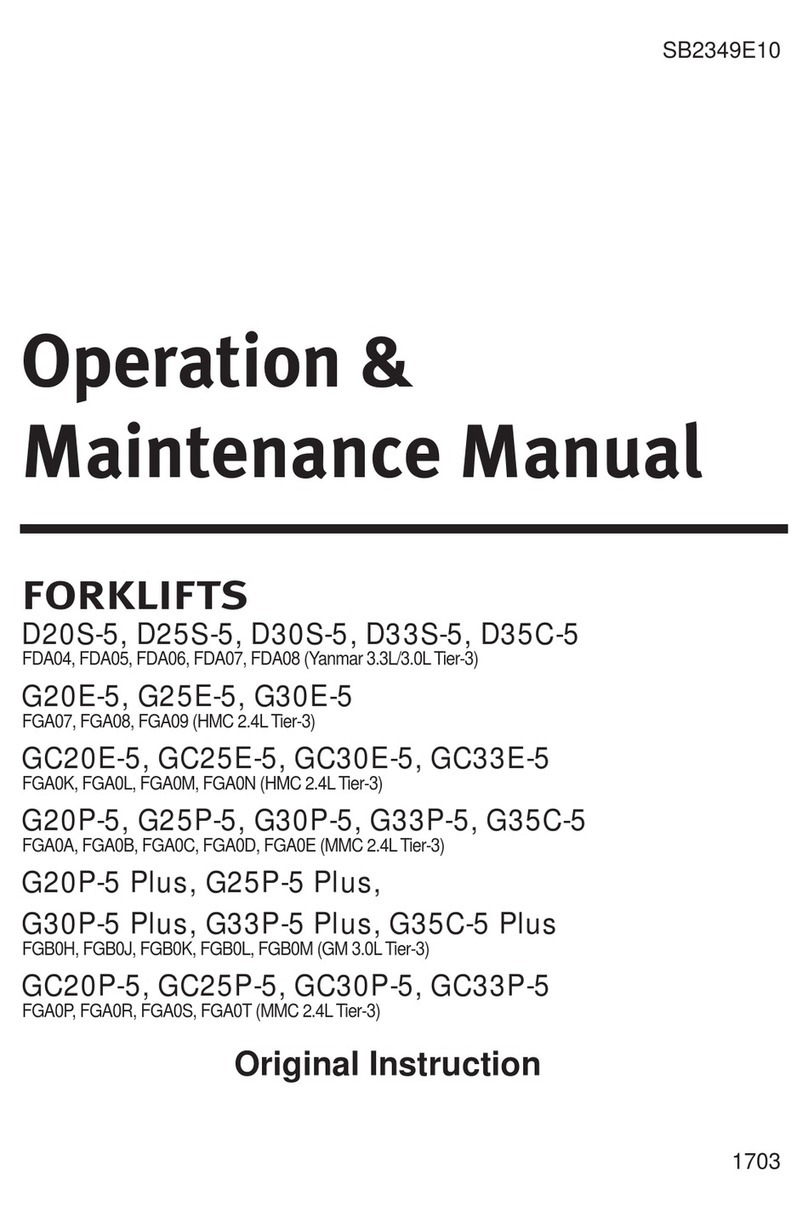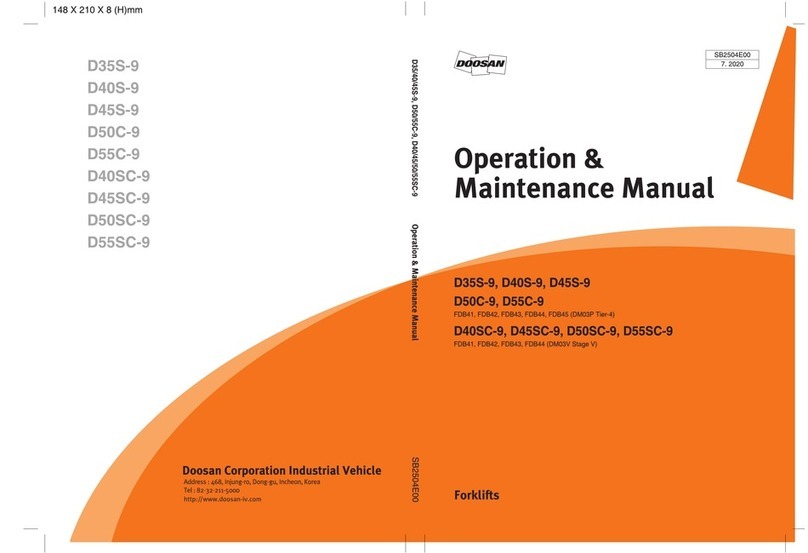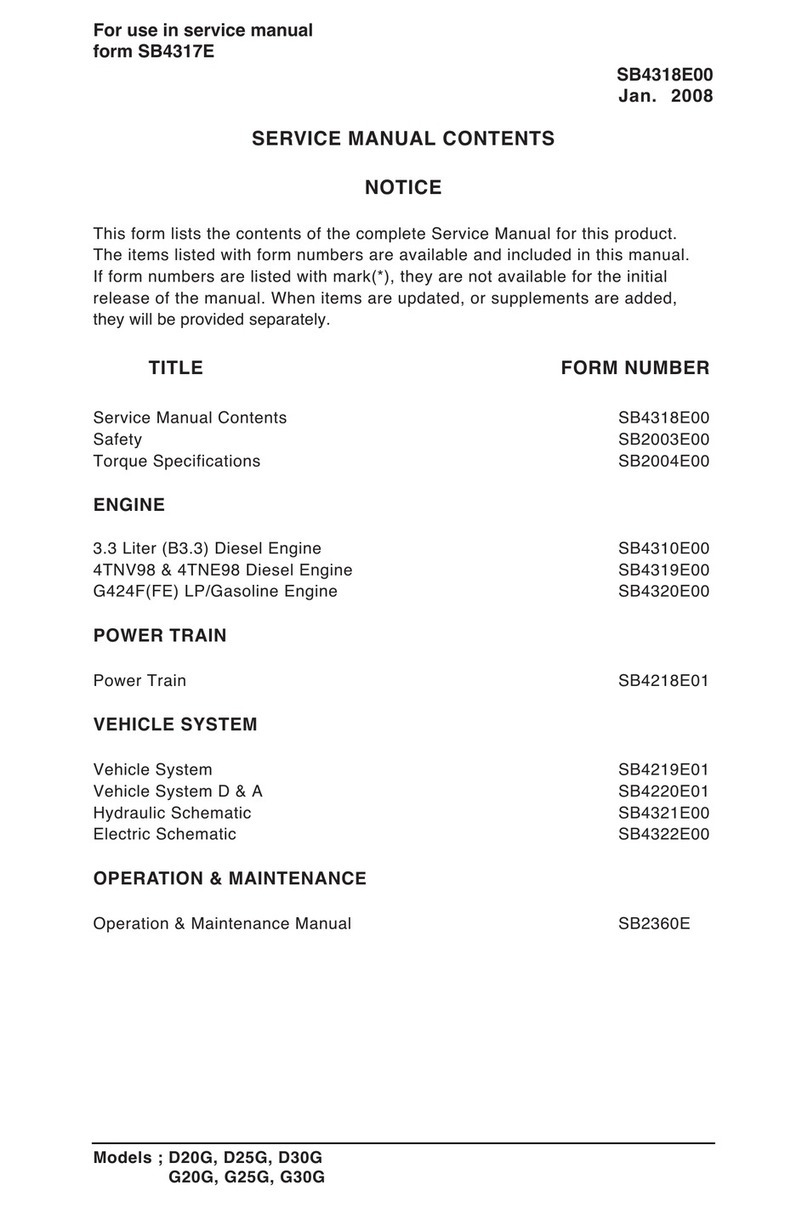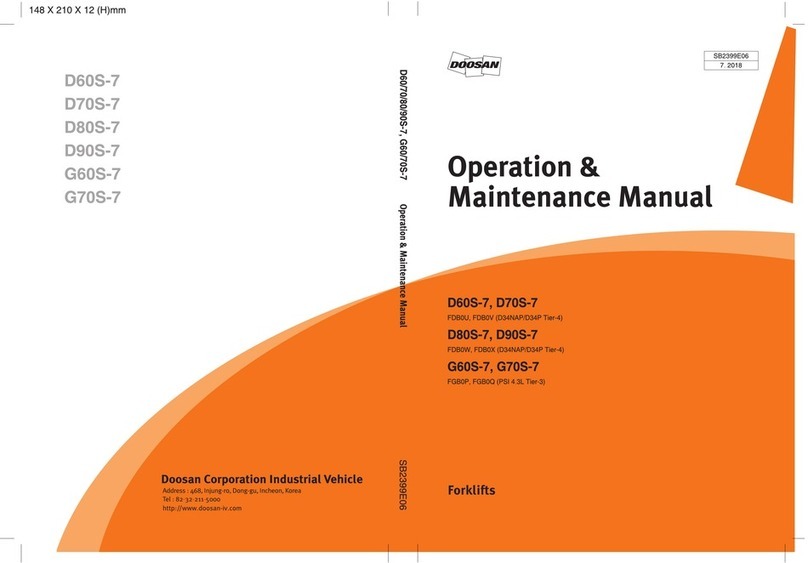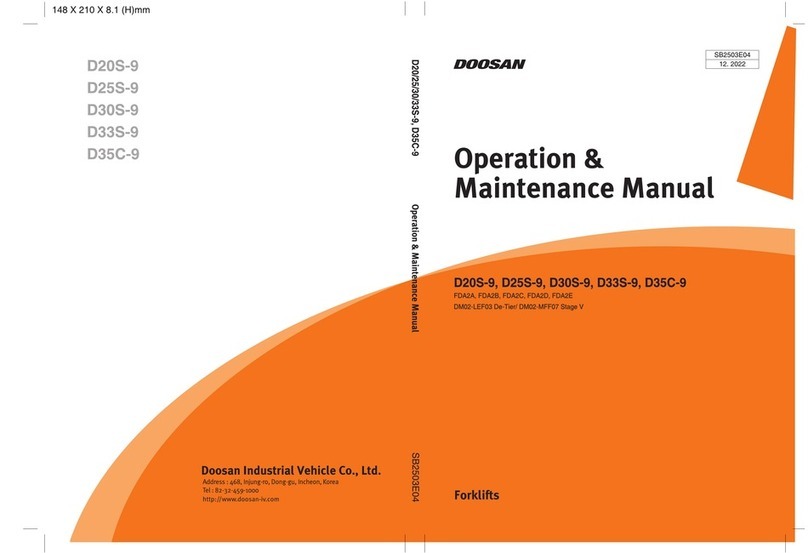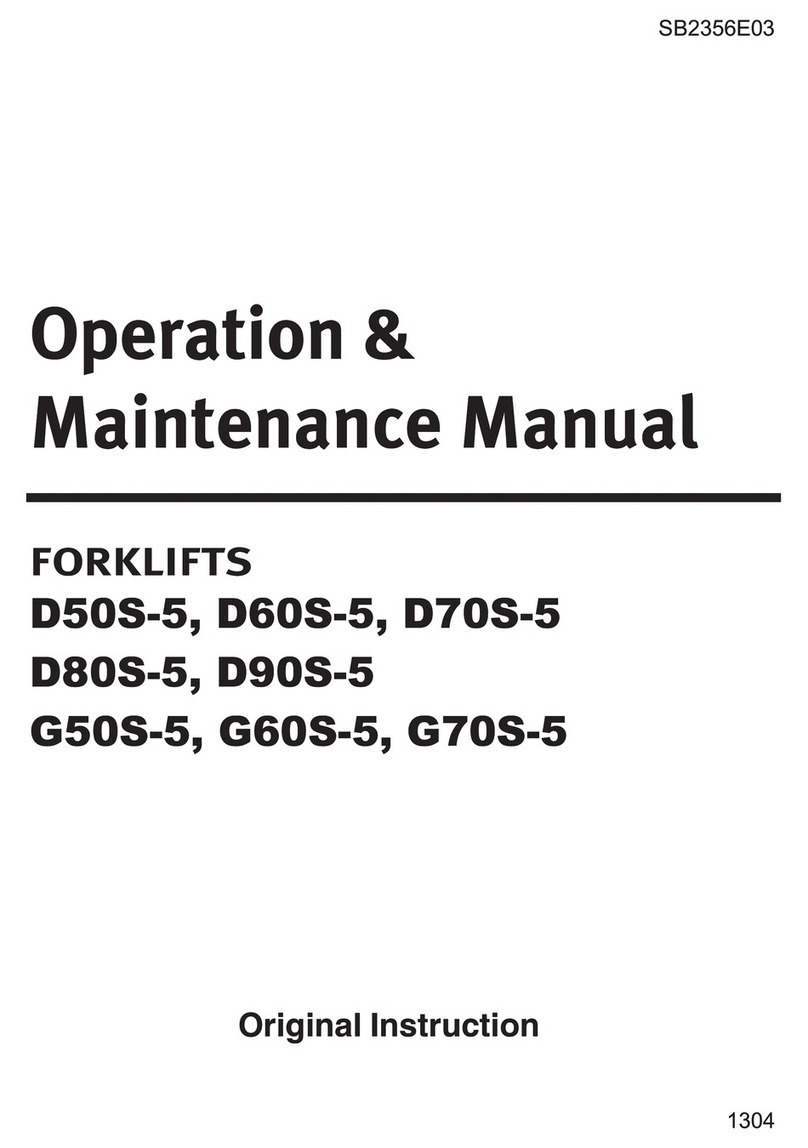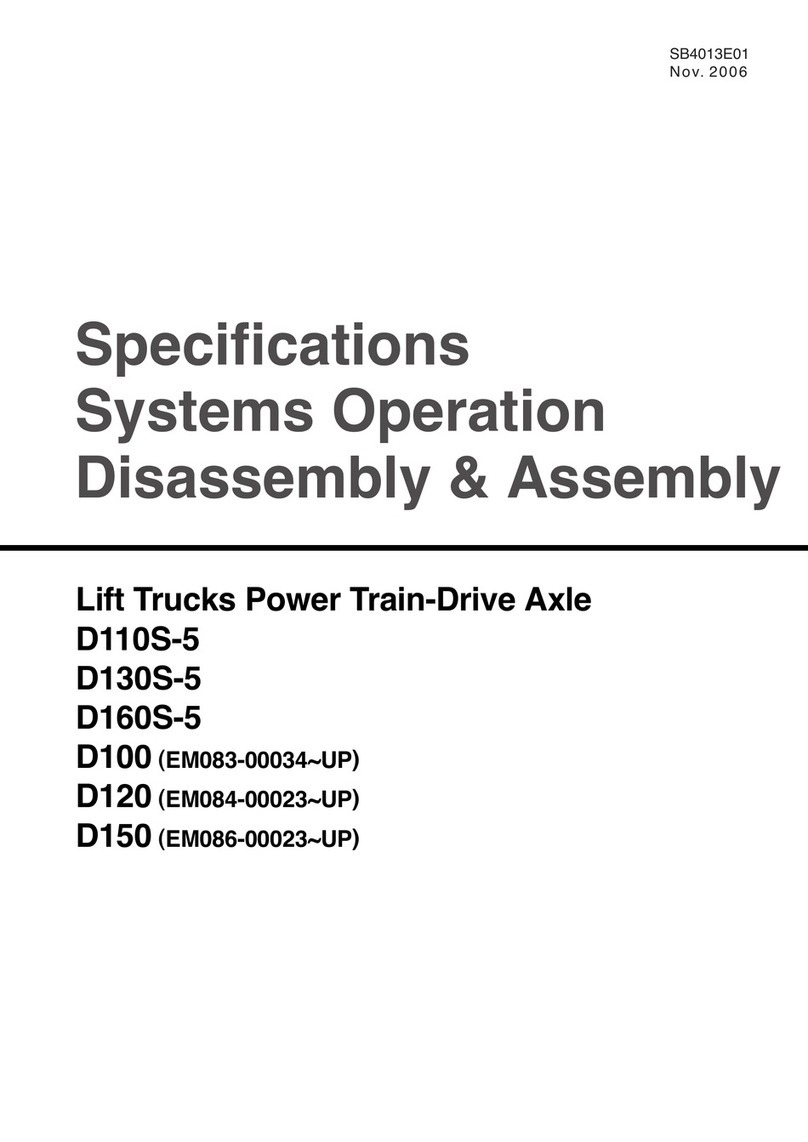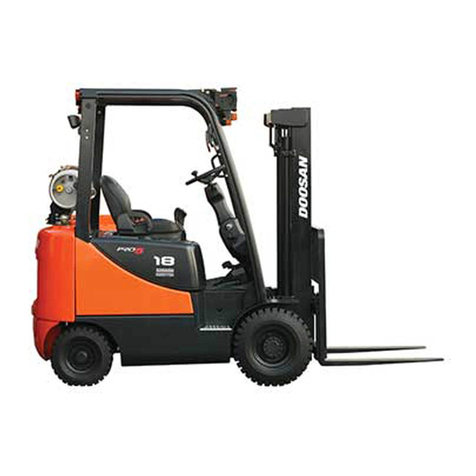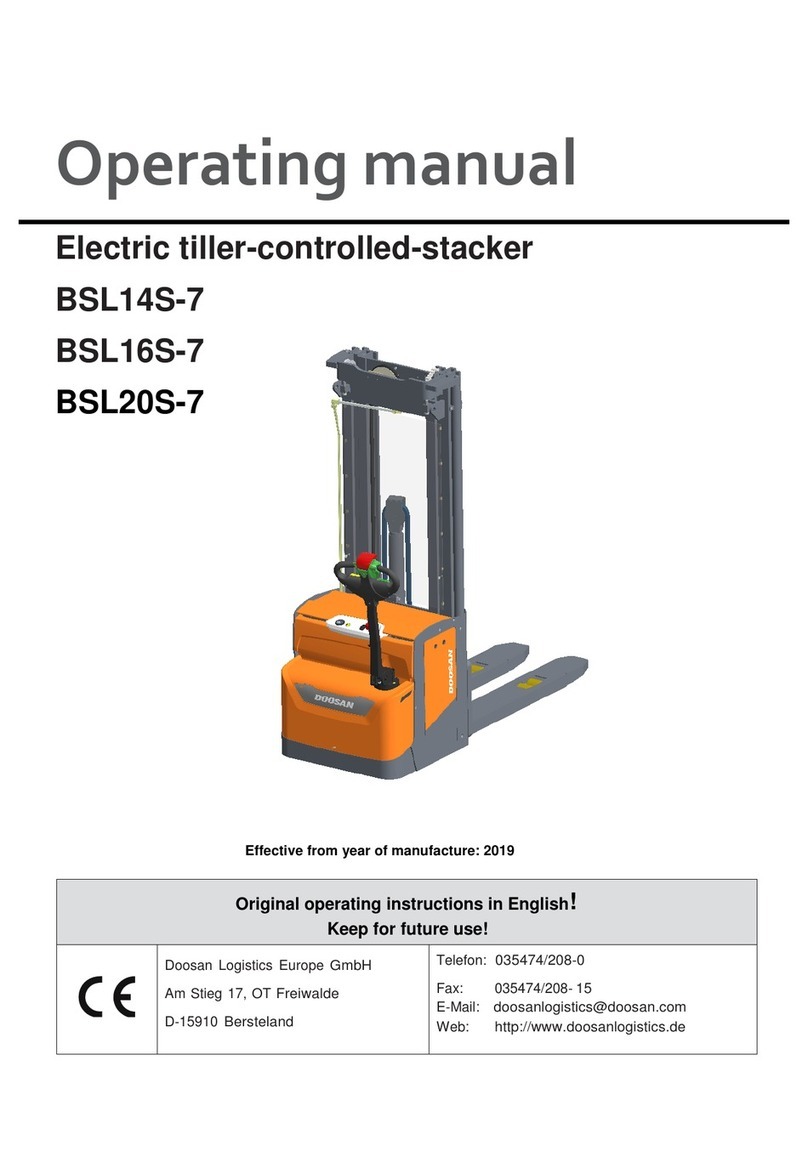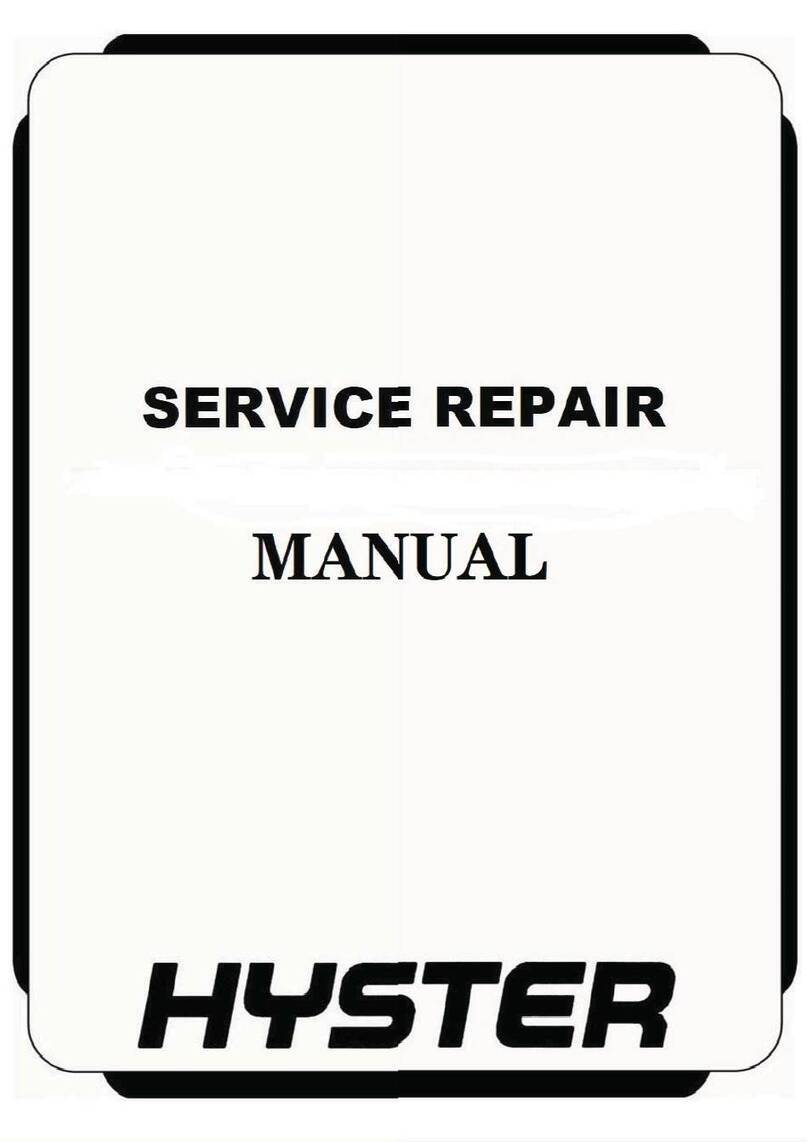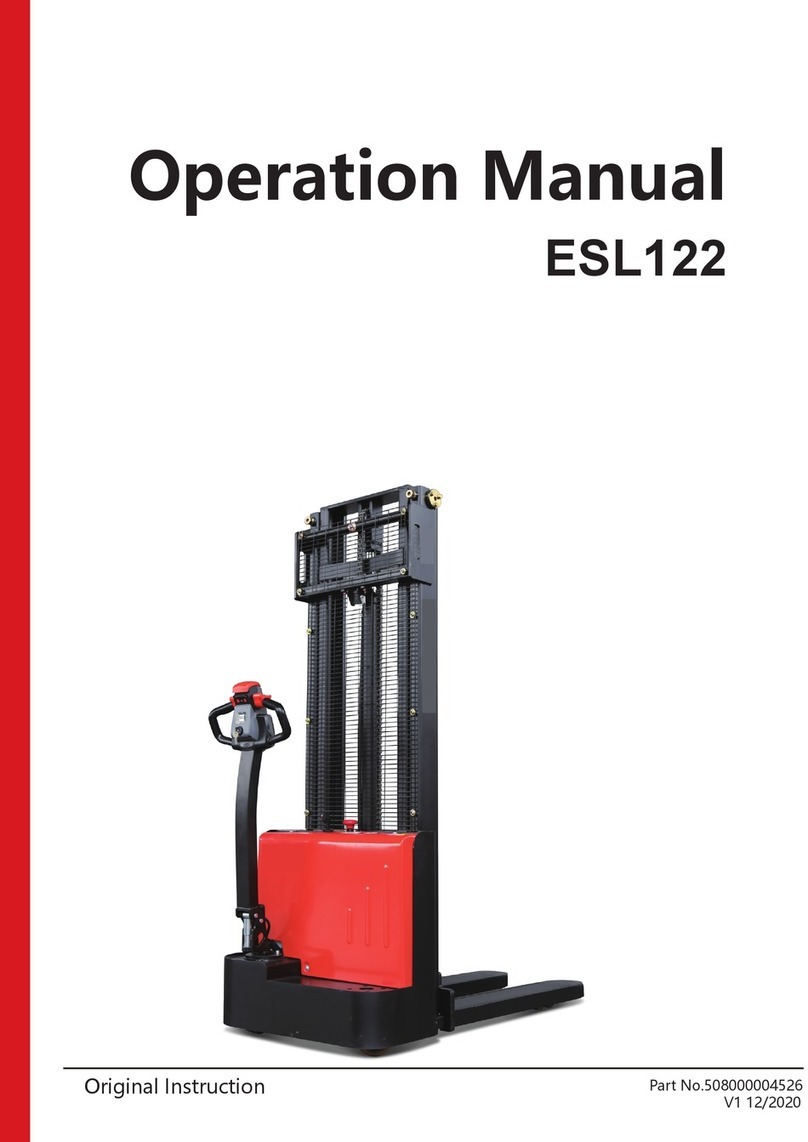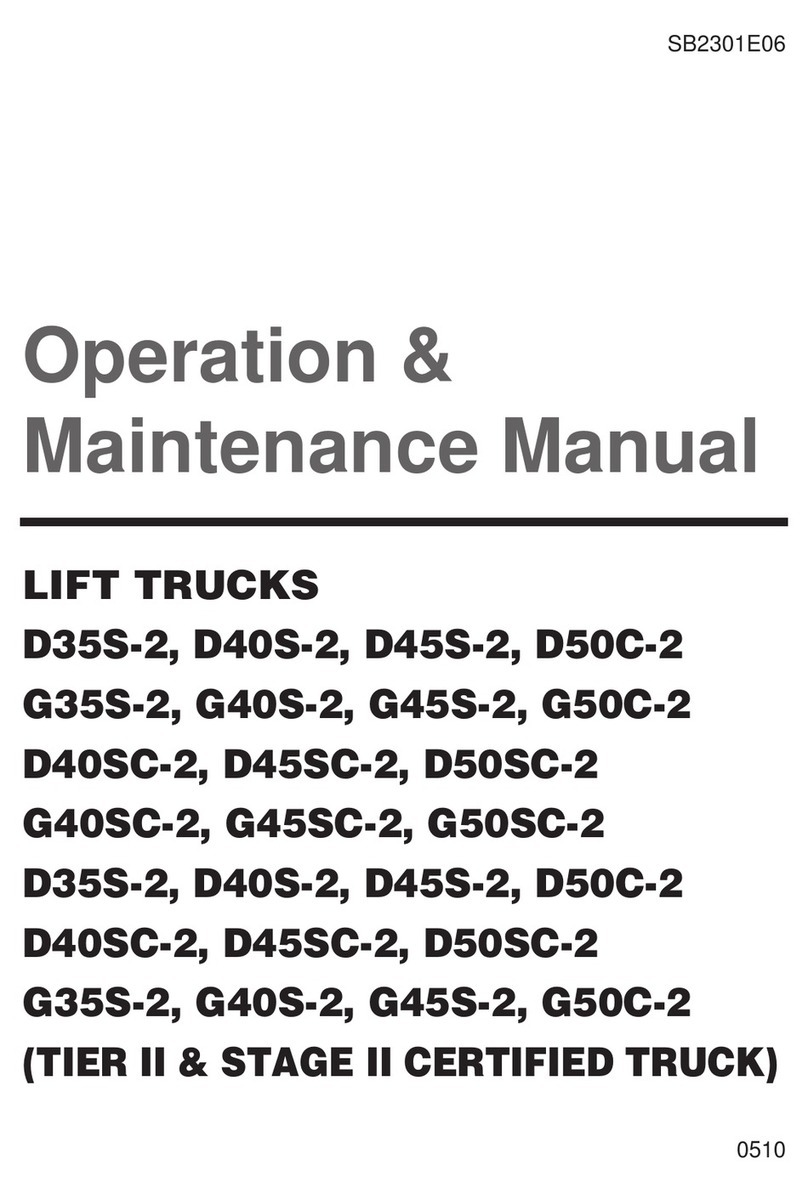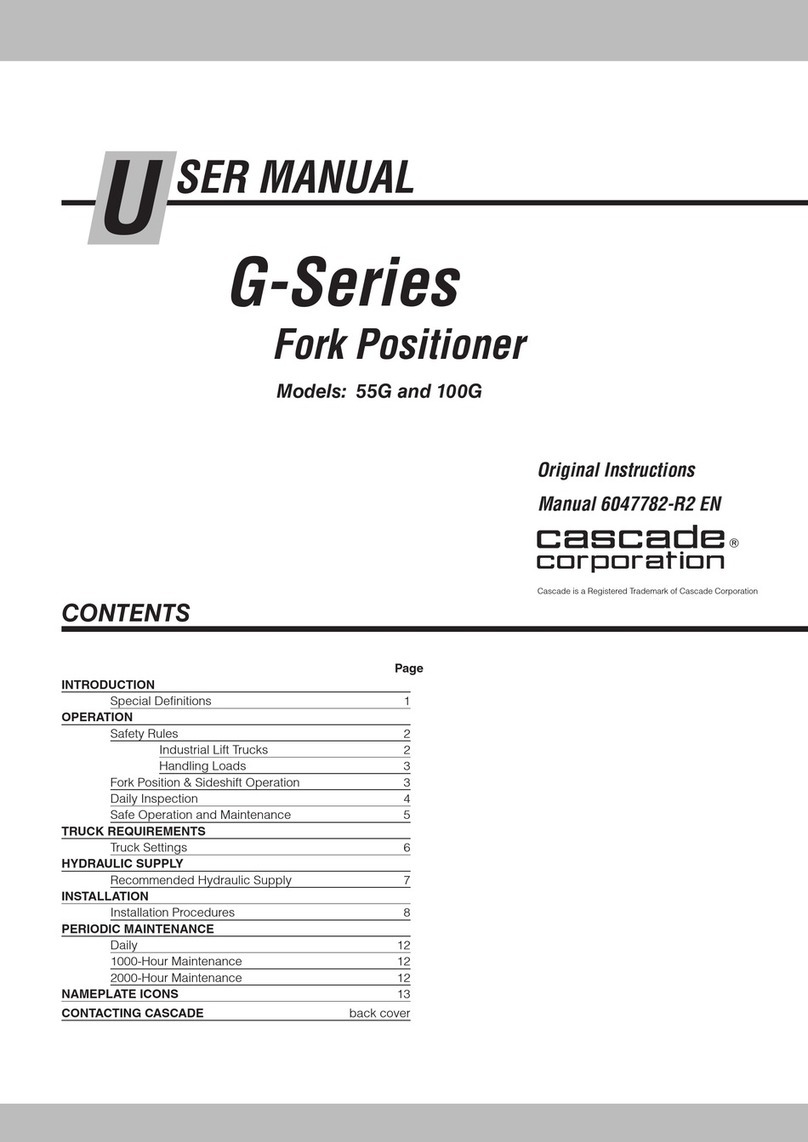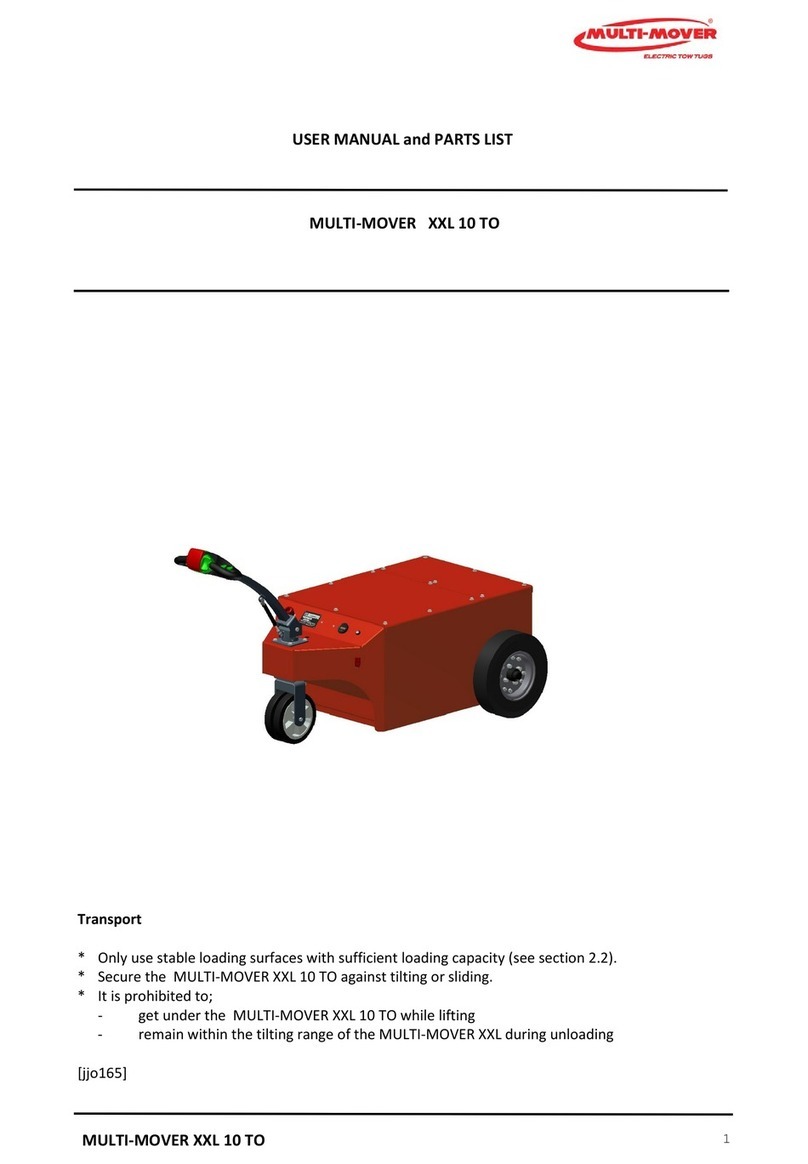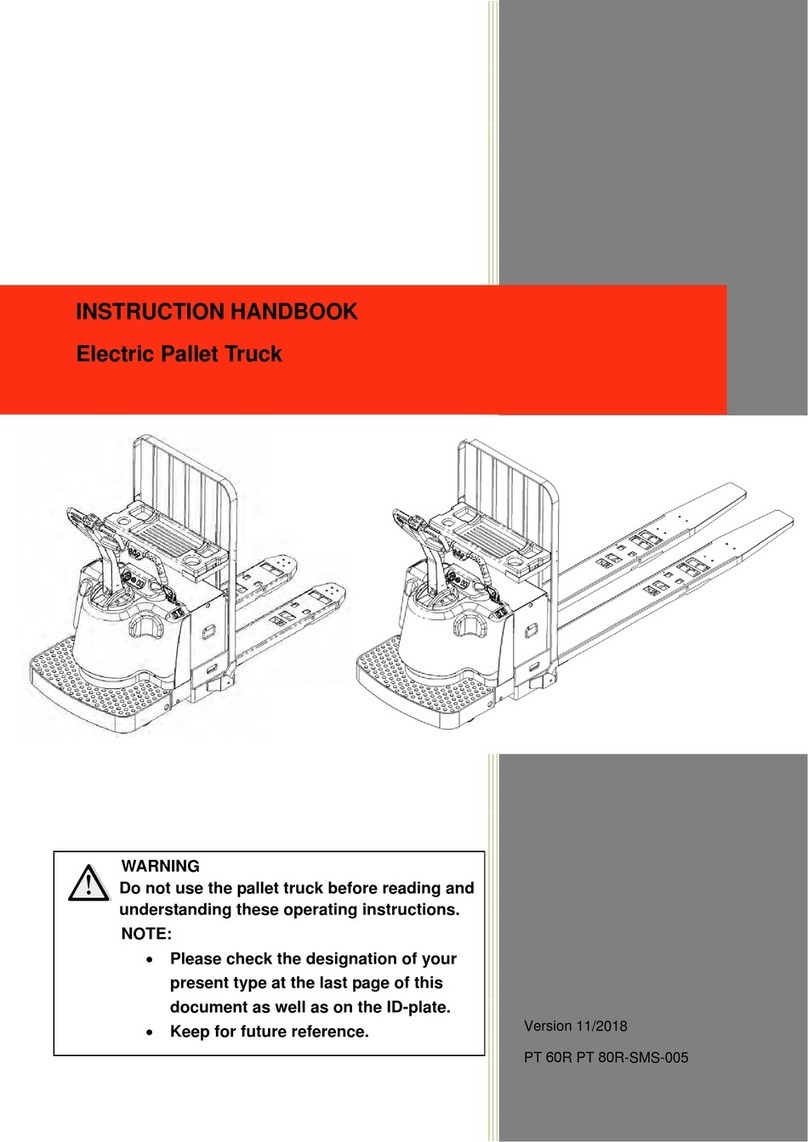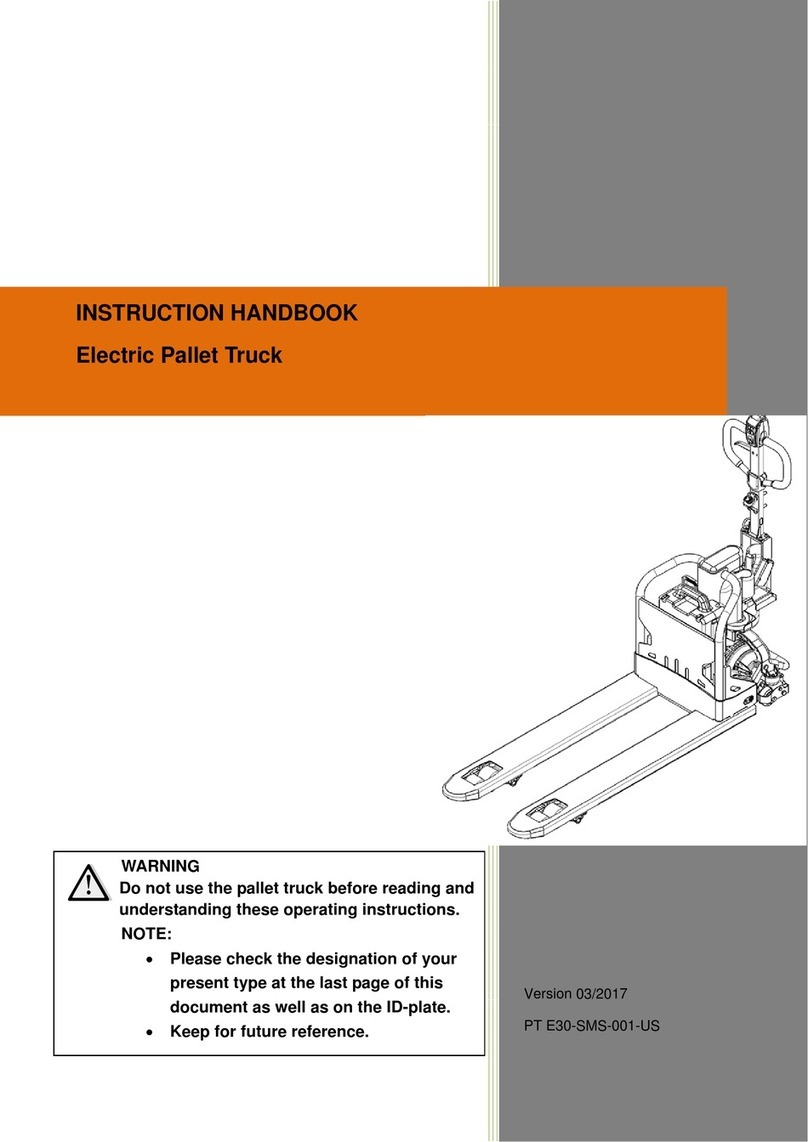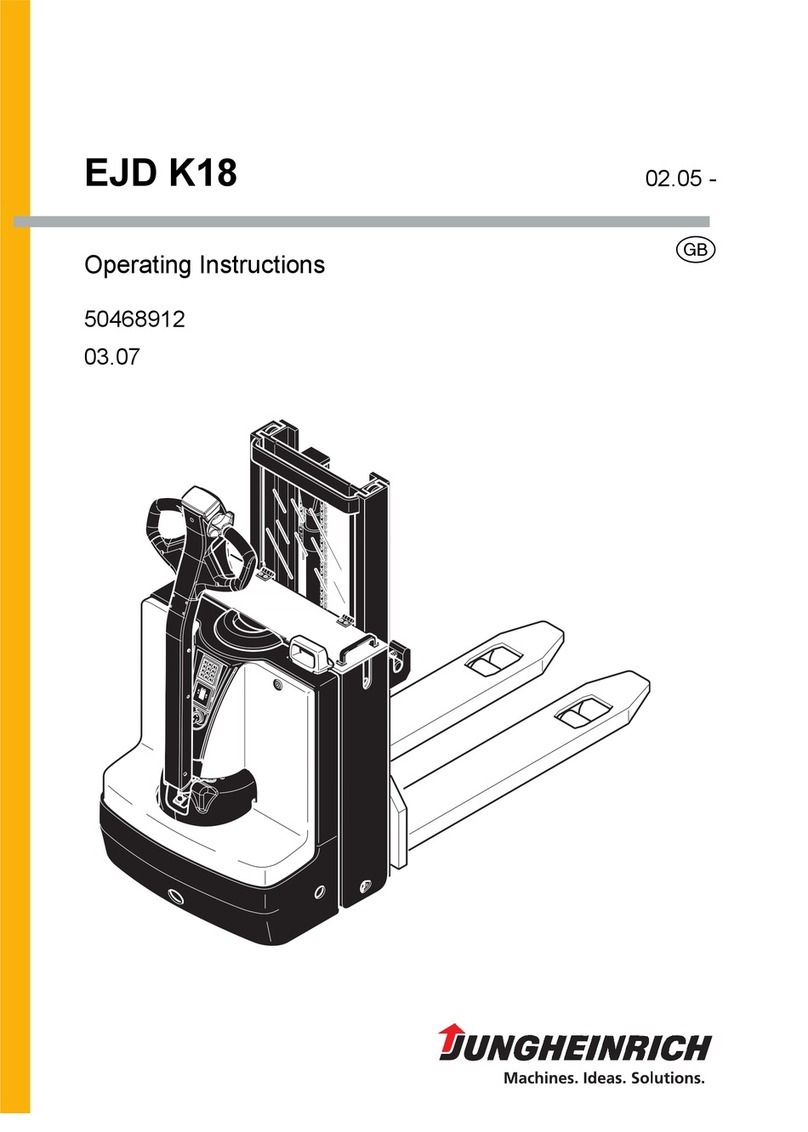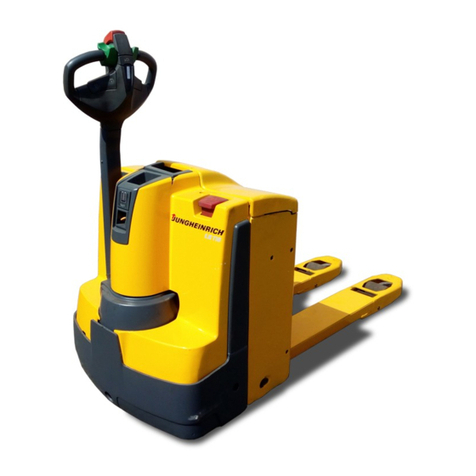Information Section
3
Operation
The Operation Section is a reference for the new
operator and a refresher for the experienced one.
This section includes a discussion of gauges,
switches, lift truck controls, attachment controls,
transportation and towing information.
Photographs and illustrations guide the operator
through correct procedures of checking, starting,
operating and stopping the lift truck.
Operating techniques outlined in this publication are
basic. Skill and techniques develop as the operator
gains knowledge of the lift truck and its capabilities.
Maintenance
The Maintenance Section is a guide to equipment
care. The illustrated, step-by-step instructions are
grouped by servicing intervals. Items without specific
intervals are listed under "When Required" topics.
Items in the "Maintenance Intervals" chart are
referenced to detailed instructions that follow.
Maintenance Intervals
Use the service hour meter to determine servicing
intervals. Calendar intervals shown (daily, weekly,
monthly, etc.) can be used instead of service hour
meter intervals if they provide more convenient
servicing schedules and approximate the indicated
service hour meter reading. Recommended service
should always be performed at the interval that
occurs first.
Under extremely severe, dusty or wet operating
conditions, more frequent lubrication than is
specified in the "Maintenance Intervals" chart might
be necessary.
Perform service on items at multiples of the original
requirement. For example, at "Every 500 Service
Hours or 3 Months", also service those items listed
under "Every 250 Service Hours or Monthly" and
"Every 10 Service Hours or Daily".
Environment Management
Note that DOOSAN INDUSTRIAL VEHICLE
DIVISION is ISO 14001 certified which is
harmonized with ISO 9001. Periodic
ENVIRONMENTAL AUDITS & ENVIRONMENTAL
PERFORMANCE EVALUATIONS have been made
by internal and external inspection entities.
LIFECYCLE ANALYSIS has also been made
through out the total product life. ENVIRONMENT
MANAGEMENT SYSTEM includes DESIGN FOR
ENVIRONMENT from the initial stage of the design.
ENVIRONMENT MANAGEMENT SYSTEM
considers environmental laws & regulations,
reduction or elimination of resource consumption as
well as environmental emission or pollution from
industrial activities, energy saving, environment
friendly product design(lower noise, vibration,
emission, smoke, heavy metal free, ozone depleting
substance free, etc.), recycling, material cost
reduction, and even environmentally oriented
education for the employee.
